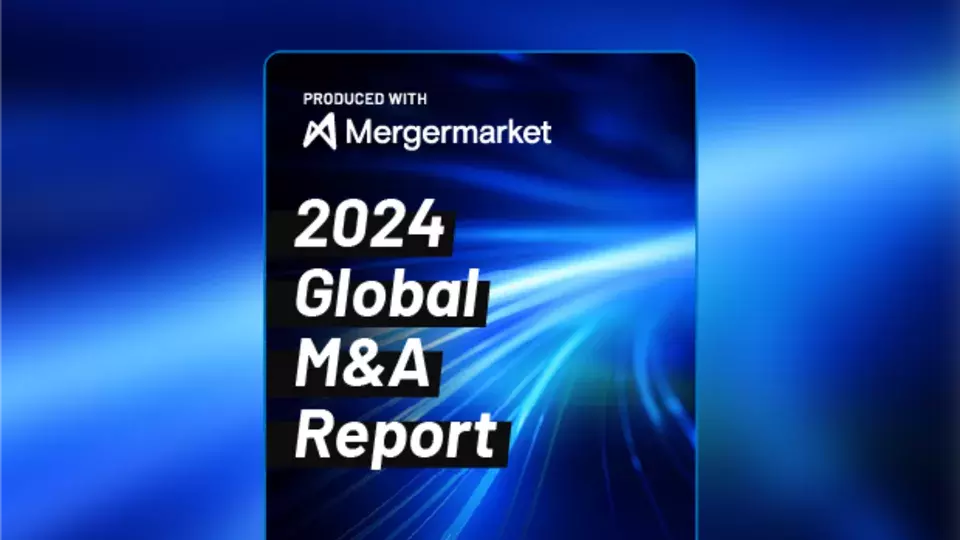As we welcome the new year, dealmakers hope 2024 will bring a more transaction-friendly environment. Today, corporates are trying to read the tea leaves on monetary policies while navigating uncertainty driven by two wars, pivotal upcoming elections, and a real estate and banking crisis in the world’s second-largest economy. In addition, many dealmakers see evolving antitrust scrutiny as a significant risk to deal certainty. Adobe’s canceled USD 20 billion acquisition of software company Figma in December 2023 is just one of the most recent big-ticket deals to crumble under regulatory pressure.
How is the 2024 mergers and acquisitions (M&A) market shaping up amid these challenges? In the SS&C Intralinks Deal Flow Predictor for Q1 2024, we look at the trends that took shape in 2023 and unpack what our early-stage deal data says about the global and regional M&A outlook for Q1 2024.
U.S. capital markets react to the latest Fed meeting
Despite geopolitical headwinds, recession fears and uncertainty around interest rates, M&A volume remained remarkably stable in 2023. As our previous forecast indicated, early-stage deal activity saw strong upside in the back half of Q3, with October seeing the highest deal flow of 2023 in three of the four geographies we track. This uptick in activity coincided with renewed optimism in U.S. capital markets as inflation and interest rates stabilized. In fact, many investors were betting on a year-end rally based on the hope that markets will continue their thaw.
Still, it remains to be seen when — and by how much — the Federal Reserve will lower interest rates in 2024. Some equity markets participants are already pricing in rate cuts and a soft landing. Time will tell whether the optimism prompted by the Fed’s December meeting was justified. Policymakers continue to walk a tightrope between potentially dragging growth by prolonging the high-rate environment or failing to sufficiently tamp down inflation.
China’s real estate market could be in for a long haul
While there may be cause for optimism in North America, dealmakers in Asia Pacific (APAC) are facing a bleak landscape, largely due to the ongoing real estate and banking crisis in China. Amid a glut of inventory and a dropping demand for housing, China’s bloated, government-backed real estate industry is reckoning with what many expect to be a prolonged dearth of activity in the sector. The property downturn could also have a lasting impact on domestic and outbound transactions — and the overall economy. However, other markets in the region could rebound in 2024 as central banks ease lending conditions. Japan, for example, has maintained a loose monetary policy, spurring a major influx of foreign investment in 2023.
Firms that dined out on cheap credit are settling up
Our data shows an uptick in early-stage bankruptcy and restructuring deals, particularly in Europe, the Middle East and Africa (EMEA), which indicates that post-pandemic macro challenges and policy changes are catching up with distressed firms that were previously tapping into cheap credit. While many of these companies built up their cash piles during the pandemic boom, funding conditions, interest rates and profit margins have since tightened. As a result, many are going insolvent, particularly in cyclical industries like Retail and Construction. Companies hoping to mitigate the financial pain and reputational damage that comes with bankruptcy will likely look to sell, creating opportunities for well-positioned firms to capitalize on distressed opportunities.
Looking ahead to 2024
In 2024, capital markets performance will have a significant impact on bankruptcy and restructuring deals, M&A and more. Issuers are still waiting for IPO conditions to improve, which could potentially unclog a pipeline of hundreds of billions of dollars in deal flow.
As we wait for market conditions to come into focus, there are still plenty of data-driven predictions to examine. Read the SS&C Intralinks Deal Flow Predictor for Q1 2024 for a comprehensive M&A forecast by sector and region. In addition, this quarter’s issue includes a special feature on the association between board diversity and deal leaks as well as an insightful article on the power of outsourcing.





